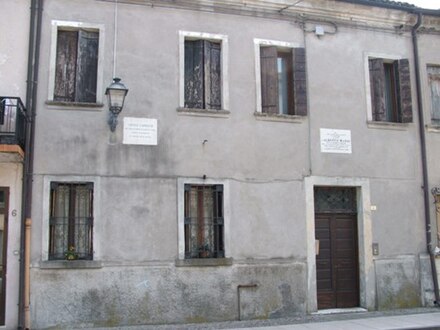History
Antiquity
Numerous archaeological finds such as cinerary urns, tombstones, coins, glass and even traces of road and hydraulic works, show that a primitive center already existed in Roman times. Perhaps there were older settlements since some findings seem to derive their origin from the Middle East.
Middle Ages
The first historical document about Lendinara dates back to 870, when Uberto Cattaneo, from Verona, obtained from the Carolings the lordship over the town, a lordship that lasted for more than four centuries. Already in the XI century Lendinara was "illustrious Castle, enriched with many factories and towers, cultured population", as the Muratori called it. The castle was located to the left of the Adigetto canal and was surrounded by fortifications that contained a large part of the town. Outside the walls, however, there was the church of Santa Sofia and the convent of San Biagio around which various districts were forming.
Lendinara was located in the middle of a very fertile territory and its rivers, Adige and Adigetto, fostered communications. The development was continuous and rapid with the construction of churches and villas and the presence of notaries, city families, and a developed municipal organization. From 1225 Lendinara had a Podesta and from 1321 it was given the first statute in the Polesine region. The city was destroyed by Ezzelino da Romano in 1246 because of the friendship of its inhabitants (Lendinaresi) with San Bonifacio. After this fire, a new city nucleus arose around the convent of the Franciscans, called 'San Marco'. The convent was suppressed in 1810, like the Abbey of Vangadizza di Badia Polesine. Around 1275, for a short period, the city became a republic. The Paduan bought the city in 1283 and then sold it to the Estensi. In this period the "Granarone”, a large store of provisions, was built. The castle had a five-story tower, and a pit that surrounded the whole town, only a wooden bridge connected the center with the fortress. Four doors regulated access to the city. The fifteenth century was the golden age for culture for Lendinara, after being sold to the Venetians. The great school of the wood artisans Canozio was also born, among which excelled Lorenzo Canozio(1426-1477), author of works of gothic art.
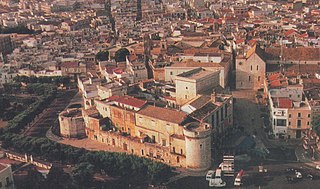
Conversano is an ancient town and comune in the Metropolitan City of Bari, Apulia, south-eastern Italy. It is 30 kilometres (19 mi) southeast of Bari and 7 kilometres (4 mi) from the Adriatic coast, at 219 metres (719 ft) above sea level.
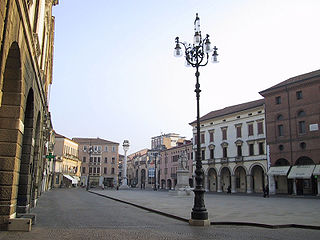
Rovigo is a town and comune in the Veneto region of Northeast Italy, the capital of the eponymous province.
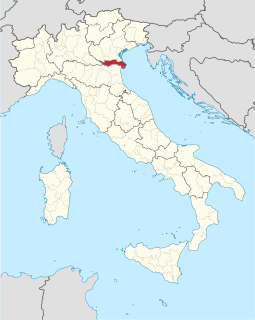
The Province of Rovigo is a province in the Veneto region of Italy. Its capital is the city of Rovigo. It borders on the north with the provinces of Verona, Padua and Venice, on the south with the province of Ferrara, on the west with the province of Mantua, and on the east with the Adriatic Sea.

Albino is a comune in the province of Bergamo, in Lombardy, northern Italy. It is located northeast of Bergamo and is situated in the valley of the river Serio. The population continues to increase.

Polesine is a geographic and historic area in the north-east of Italy whose limits varied through centuries; it had also been known as Polesine of Rovigo for some time.

Monte Sant'Angelo is a town and comune of Apulia, southern Italy, in the province of Foggia, on the southern slopes of Monte Gargano.

Poggibonsi is a town in the province of Siena, Tuscany, central Italy. It is located on the Elsa River and is the main centre of the Valdelsa Valley.

Teggiano is a town and comune in Campania, Italy, in the province of Salerno. It is situated on an isolated eminence above the upper part of the valley to which it gives the name of Vallo di Diano.

Lauria is a town and comune of the province of Potenza, in Basilicata, southern Italy, situated near the borders of Calabria. It is a walled, medieval town on the steep side of a hill, with another portion of municipal territory in the plain below.
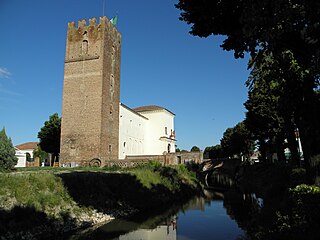
Arquà Polesine is a comune (municipality) in the Province of Rovigo in the Italian region Veneto, located about 70 kilometres (43 mi) southwest of Venice and about 7 kilometres (4 mi) southwest of Rovigo.

Badia Polesine is a comune (municipality) in the Province of Rovigo in the Italian region Veneto, located about 70 kilometres southwest of Venice and about 25 kilometres west of Rovigo. It is part of the upper Polesine, and is bounded by the Adige river, which separates the communal territory from the province of Padua.
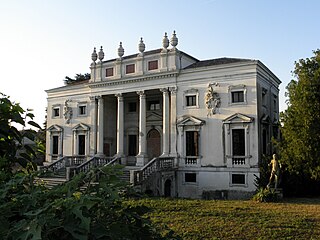
Canda is a comune (municipality) in the Province of Rovigo in the Italian region Veneto, located about 80 km southwest of Venice and about 20 kilometres (12 mi) west of Rovigo. As of 31 December 2004, it had a population of 958 and an area of 14.4 square kilometres (5.6 sq mi).

Polesella is a comune (municipality) in the Province of Rovigo in the Italian region Veneto, located about 70 kilometres southwest of Venice and about 11 km (7 mi) south of Rovigo.

San Bellino is a comune (municipality) in the Province of Rovigo in the Italian region Veneto, located about 73 kilometres (45 mi) southwest of Venice and about 15 kilometres (9 mi) west of Rovigo.

Villanova del Ghebbo is a comune (municipality) in the Province of Rovigo in the Italian region Veneto, located about 70 kilometres (43 mi) southwest of Venice and about 10 kilometres (6 mi) west of Rovigo. As of 31 December 2004, it had a population of 2,209 and an area of 11.8 square kilometres (4.6 sq mi).
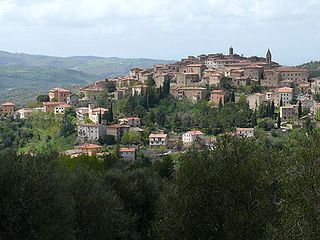
Seggiano is a comune (municipality) in the Province of Grosseto in the Italian region Tuscany, located about 100 kilometres (62 mi) south of Florence and about 40 kilometres (25 mi) northeast of Grosseto.
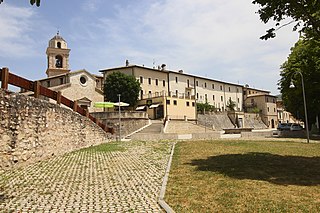
Sellano is a comune (municipality) in the Province of Perugia in the Italian region Umbria, located about 50 km southeast of Perugia. As of 31 December 2018, it had a population of 1,048 and an area of 85.7 km².
San Biagio is a Neoclassic style, Roman Catholic church in the city of Lendinara, in the province of Rovigo, region of Veneto, Italy. The church facade presently faces the Adigetto River.

San Rocco is a small Renaissance style, Roman Catholic church located at the banks of the Adigetto in the city of Lendinara, in the province of Rovigo, region of Veneto, Italy.
The Sanctuary of the Madonna del Pilastrello is a Renaissance style, Roman Catholic minor basilica church in the city of Lendinara, in the province of Rovigo, region of Veneto, Italy.

